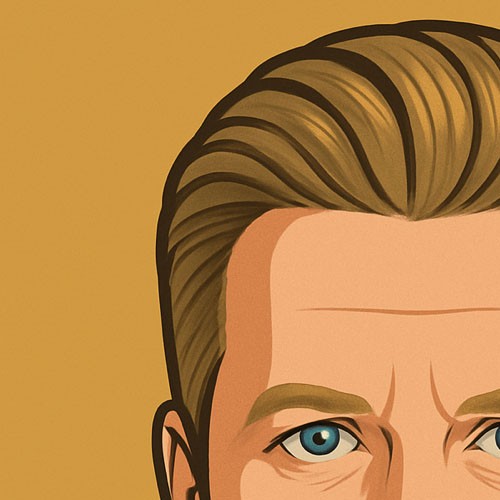Self-Regulation Through Greed: How the Adult Industry Repeats Its Mistakes – and Why OnlyFans is Already Dead

A compressed history of the online adult industry, 1997 – 2015
The modern online adult market was never static. It evolved in clear waves.
In the late 1990s, early paysites thrived on galleries and staged updates — small image sets or 1-minute “cut” videos designed to minimize bandwidth costs. By the early 2000s, video delivery and billing systems matured enough to support more frequent updates, though most sites still optimized for traffic minimization.
Parallel to this, the first serious dating verticals emerged — AdultFriendFinder, SexSearch, Affaire (Germany) — selling access to communities rather than content libraries. At the same time, webcam networks — Visit-X, ImLive, LiveJasmin — monetized interaction in real time.
From 2005 onward, UGC (user-generated content) reshaped everything. Platforms like MyDirtyHobby, Southern Charms, PrivatAmateure and similar domestic portals allowed amateurs to publish and monetize directly. Meanwhile, established studios such as Naughty America integrated community features to keep pace with user-led expectations.
Marketing also transformed. What began with TGPs (thumbnail gallery posts) and affiliate-driven blogs soon gave way to tube sites that rewired consumption by making porn “free” at the point of entry. Simultaneously, mainstream networks such as Facebook and YouTube were heavily spammed with adult offers before they learned to close their gates. The result was a flood of cheap, easy entry points and a reshaped funnel where traffic and conversion became the core currencies.
Where the big money exposed the worst incentives.
As competition intensified, financial engineering outpaced product design.
Bundled upsells and negative options
Operators discovered that deceptive billing could multiply ARPU. Users signing up for a $24.95 membership would often find themselves billed $60–70 after being auto-enrolled into 3–4 lowquality “bonus” programs. Recurring billing was buried in fine print. For a short time, the money was enormous — but the long-term effect was reputational rot and declining consumer trust.
Dialers and the modem era
In the early 2000s, another scheme exploited the technology of the time: the dialer. This was software that silently reconfigured a user’s modem to call premium-rate phone numbers. Consumers learned only when the monthly phone bill arrived. For affiliates and operators it was an easy profit channel; for consumers it was pure fraud. Dialers are extinct today, but they illustrate how the industry historically monetized the vulnerabilities of its time.
The Mobile First era — one-click billing and the carrier clampdown
Around 2008–2012, the next gold rush appeared: mobile billing. As smartphones spread, carriers offered one-click payment solutions billed directly to phone accounts.
For affiliates and product owners, this was revolutionary. Conversion rates skyrocketed because no credit card was needed — a single tap could unlock videos, apps, or memberships. Low-quality offers were pushed aggressively: “joke of the day” subscriptions, wallpapers, ringtones, or lowvalue adult clips. Affiliates, not studios, became the true “banks” of this era, extracting huge sums with minimal overhead.
But success bred scrutiny. Carrier complaints surged, regulators intervened, and consumer protection rules tightened. Once carriers were forced to implement double-opt-in flows, spending caps, and refund protocols, the easy money evaporated. The mobile one-click era ended as abruptly as it began, leaving a trail of bankrupt affiliates and reshaped billing ecosystems.
The product misunderstanding — cams, UGC, and fake “dating”
Another structural mistake was mislabeling product categories.
UGC and cam platforms were content/tipping marketplaces. But to maximize conversions, affiliates promoted them as dating sites. Customers joined expecting reciprocal interaction; instead they found performers selling private shows or content.
Amateurs (Creators) quickly realized that pretending to offer dating could yield higher profits — until users discovered the illusion. In many cases, the outcome was catastrophic: bankrupt clients chasing false promises, or disillusioned customers abandoning platforms altogether. Affiliates, too, learned that “dating traffic” converted better when sent to cam/UGC funnels, but this bait-and-switch eroded trust across the ecosystem.
The history repeats – or why OnlyFans is already dead
OnlyFans scaled fast and dominated headlines, but as a business model, it is already obsolete.
- The destruction of the affiliate ecosystem
OnlyFans fundamentally cut affiliates out of the equation, shifting everything onto creatordriven traffic. At first glance, the pitch was seductive: creators could keep more if they brought their own fanbase. But the reality is cruel — only a small number of models and creators actually have a large enough following to make this viable.
When the hype hit, many models from MyDirtyHobby and other German UGC platforms migrated their “whales” to OnlyFans, where they effectively took home more than on the established platforms. In doing so, they weakened the classic ecosystem. Affiliates and webmasters, who had once been the driving force of traffic and discovery, felt betrayed and walked away from promoting UGC platforms altogether.
The sword, however, cuts both ways. While top-tier creators temporarily gained, thousands of smaller models without their own traffic pipeline were left behind. Without the affiliate-driven funnel, they now struggle with drastically lower earnings, often worse than what they could achieveunder the old 30/30/40 split. What was sold as empowerment became exclusion.
- Agencies exploiting the gap
Into this vacuum stepped so-called OnlyFans agencies, offering “management” services — content scheduling, DMs, promotion. In reality many strip up to 60% of a creator’s revenue, locking them into contracts and controlling access to their fanbases.
- The fraud of scripted interaction
These agencies also destroy the USP of OnlyFans — authentic one-to-one interaction between fan and creator. Instead, they deploy scripted conversation flows, tricking fans into spending more through staged intimacy, artificial urgency, or the “pay-and-meet-me” method, where users are promised personal encounters for escalating payments. This isn’t connection; it’s a scam cycle that leaves fans feeling cheated and creators detached from their own audience.
- The revenue split collapse
In the earlier UGC era, the split between creators, affiliates, and platforms typically followed a 30/30/40 structure. Crucially, when creators brought their own traffic, they could earn up to 60% of the revenue. Platforms like MyDirtyHobby supported this model and rewarded creators who invested in self-promotion. Today, by contrast, the OnlyFans cut plus agency commissions often leave creators with less than 30% of the money their fans spend a worse deal than a decade ago.
- Payment and compliance fragility
OnlyFans’ 2021 near-ban on explicit content, triggered by payment-processor pressure, showed how vulnerable the model is to external decision-makers. With regulators and banks tightening rules on age verification and compliance, the risk is systemic.
- Competition and vertical specialization
Cam networks, tipping apps, and newer fan platforms now replicate or improve on OnlyFans’ features while taking smaller cuts, reimplementing affiliates (the view left still willing to promote adult). Creators migrate easily; fans follow them.
- Reputational drag
As scams, agencies, and exploitation stories accumulate, OnlyFans has lost the cultural aura it once held. What remains is just another middleman platform, stripped of its original differentiation.
Verdict: OnlyFans may still be profitable in 2025, but its unique advantage is gone. The platform is commoditized, overrun by exploitative agencies, structurally weaker without the affiliate/webmaster ecosystem that once guaranteed scalable traffic, and compromised by scripted scam systems that erase the promise of genuine interaction. In strategic terms, it is already dead.
Final notes — lessons unlearned
The adult industry has repeatedly chased short-term monetization tricks — negative options, dialers, one-click mobile billing, mislabeled dating funnels, and now agency-driven exploitation. Each cycle delivers fast profits, then ends in regulatory crackdowns, reputational collapse, or platform obsolescence.
A critical, repeating mistake is the betrayal of affiliates, webmasters, and smaller creators. By cutting out traffic partners to capture more revenue for platforms or top-tier creators, the industry destroys the very ecosystem that sustains discovery and monetization. OnlyFans is the clearest modern example: by sidelining webmasters and favoring creators with their own fanbases, it left thousands of smaller creators struggling for earnings while agencies further exploited the platform.
The core lesson remains: Without sustainable traffic flows, honest product positioning, fair revenue splits, and respect for affiliates and ecosystem partners, no model endures. OnlyFans ignored that truth, and the result is inevitable: commoditization, agency exploitation, scripted scams, and eventual decline.
![]() About the author: Thorsten Heim is an Industry Veteran and Business Consultant at Executive Outcomes, specializing in strategy, operations, and business transformation. With decades of cross-industry experience, he helps organizations achieve measurable results, sustainable growth, and long-term value. Known for combining analytical rigor with practical solutions, Thorsten empowers leaders to navigate challenges and seize new opportunities.
About the author: Thorsten Heim is an Industry Veteran and Business Consultant at Executive Outcomes, specializing in strategy, operations, and business transformation. With decades of cross-industry experience, he helps organizations achieve measurable results, sustainable growth, and long-term value. Known for combining analytical rigor with practical solutions, Thorsten empowers leaders to navigate challenges and seize new opportunities.










